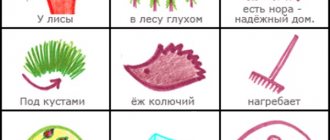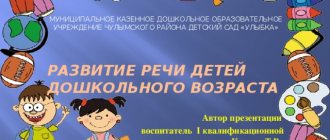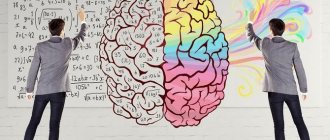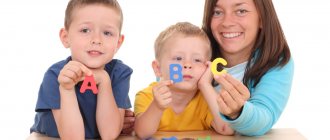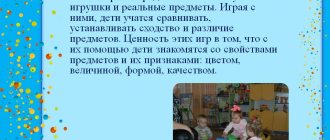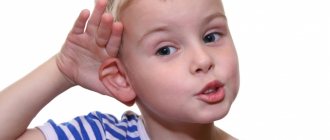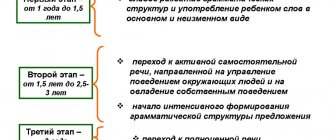- home
- Speech development
The formation and active development of the level of coherent speech for preschoolers requires not only the increased attention of both parents, but also specialized classes that can be conducted in a playful or theatrical form, which is especially attractive to children. In the process of working with children, speech therapists and teachers use many modern techniques, among which mnemonics stands out, aimed at actively developing the level of coherent speech and memory in preschool children.
What is mnemonics
Mnemonics for increasing the level of speech development is a set of techniques aimed at improving perception with memorization of various information using sound samples and visual illustrations.
Provided that classes are carried out systematically, mnemonics for speech development allow you to:
- improve the memorization of heard texts in the form of stories, fairy tales, etc.;
- transform visually acquired data into abstract (and vice versa);
- create logical chains of events;
- Expand words knowledge;
- stimulate the development of imagination and thinking;
- develop children’s ability to compose complex sentences of a descriptive type, which include many words.
Mnemonics, as one of the most effective methods of memorization, is actively used not only by speech therapists, but also by teachers in kindergartens and other preschool institutions.
There are no age restrictions for classes, but many specialized experts recognize the age of 4-5 years as the most optimal, when children already have a fairly rich and varied stock of words and phrases that they can actively use.
The main tool that is used in mnemonics for developing the level of coherent speech in preschool children are mnemonic tables - specific diagrams in which certain information data is embedded.
Mnemonic diagrams for the little ones should be painted in bright shades so that the image that a frog is green, a chicken is yellow, etc. is imprinted in their minds.
For older children, it is preferable to use single-color schemes that do not distract attention, distracting them with additional, and often unnecessary, details.
Areas of use of mnemonic tables
Mnemonic tables for the formation and development of coherent speech (developmental and educational) are images of textual information that is previously divided into groups of words in sequential order. There is one illustration for each group of words. Thanks to such a schematic sketch of information, the baby easily perceives it, remembering everything without much effort.
Using mnemonic tables for speech development, the following is carried out:
- Memorizing fairy tales or rhymes. Young children take part with great interest in educational games based on fairy tales they know. At home, you can invite your child to tell a story to his favorite toy, using a series of pictures. You can also draw a mnemonic table together, depicting the heroes of events with your own invented symbols, for example, a triangle is a person, a wavy line is a cloud in the sky. Thus, not only the formation of coherent speech occurs, but also the active development of imagination and fantasy with the manifestation of the hidden creative abilities of children.
- Learning general rules, such as how to brush your teeth correctly. The diagrams depict the sequence of all manipulations that are easily perceived and remembered.
- Compiling stories describing objects, events, pets, etc. Focusing on pictures that answer basic questions: who is it, what color is it, what sounds does it make, what does it like to eat, etc., children can create a consistent description.
- Working on a retelling. After reading the text, the most difficult words are highlighted, the meaning of which must be explained to the child. After the explanations, a conversation should be held on the entire content of the text with a demonstration of drawings from the mnemonic table. A joint retelling using pictures will allow the child to quickly remember information and tell the story he heard himself.
- Solving riddles. With the help of mnemonic tables, children learn to identify an exact object, focusing on its characteristics. At the first stage, it is necessary to explain to the child everything that is depicted in each picture, and only after that offer to independently guess the encrypted object.
Speech therapy classes on the development of coherent speech using a variety of mnemonic diagrams involve memorizing and deciphering the plot illustrations given in the table. The type and thematic content of mnemonic tables can be different; execution can be printed (Doman cards) or made by hand. Cards for speech development in the first lessons should be small with light storylines; it is recommended to place 3-4 of them in one row, in this position they are easier to perceive.
Mnemotables “Favorite Tales”
Good day! I really love doing theatrical activities with my students. In addition to performing at holidays and in theater productions, it is very important that group rooms have the necessary conditions for the development of children's creative potential. I present to you cards - mnemonic tables.
A mnemonic table is one of the most popular and effective techniques (mnemonics) that can be used to facilitate the process of memorizing and reproducing information by preschoolers, developing thinking and speech. In my mnemonic tables, there are sequential images in which the content of fairy tales is encrypted. When an adult listens to a fairy tale, the child remembers it not only by ear, but also by visual perception. He can retell a familiar fairy tale.
On the back of the cards I placed the fairy tale itself in the form of text. It is intended for a teacher, if suddenly he is not familiar with this fairy tale or has forgotten some details.
I took pictures of fairy tales from the Internet, but mainly from this site: https://www.detiam.com/
Next, I want to offer my colleagues the opportunity to use my work.
Wolf and 7 kids. Table DOCX / 2.8 MB Wolf and 7 kids. Text DOCX / 14.18 KB Zayushkina's hut. Text DOCX / 14.93 Kb Zayushkina's hut. Table DOCX / 2.8 MB Kolobok. Table DOCX / 4.27 MB Kolobok. Text DOCX / 19.28 Kb Who said meow. Suteev. Table DOCX / 22.51 KB Who said meow. Suteev. Text DOCX / 753.89 Kb Chicken Ryaba. DOCX table / 3.65 MB Chicken Ryaba. Text DOCX / 12.63 Kb Chanterelle with a rolling pin. Table DOCX / 796.68 KB Chanterelle with a rolling pin. Text DOCX / 17.42 KB Little fox-sister. Table DOCX / 542.95 KB Little fox-sister. Text DOCX / 16.21 KB Masha and the Bear. Table DOCX / 687.65 Kb Masha and the Bear. Text DOCX / 17.88 KB Comb cockerel. Table DOCX / 774.23 Kb Comb cockerel. Text DOCX / 18.04 Kb Under the mushroom. Suteev. Text DOCX / 17.19 Kb Under the mushroom. DOCX table / 1.01 MB Turnip. DOCX table / 5.51 MB Turnip. Text DOCX / 14.51 KB Teremok. Table DOCX / 605.37 KB Teremok. Text DOCX / 16.55 Kb Three kittens. Suteev. Text DOCX / 18.4 Kb Three kittens. Table DOCX / 539.71 Kb Three bears. Table DOCX / 706.85 Kb Three bears. Text DOCX / 16.98 Kb The Three Little Pigs. Table DOCX / 1.1 MB Three Little Pigs. Text DOCX / 24.51 Kb Chicken and duckling. Suteev. Text DOCX / 17 Kb Chicken and duckling. DOCX table / 577.2 KB
How to create mnemonic tables
Drawing up mnemonic tables involves performing the following manipulations:
- breaking the text into parts (focusing on the most important points);
- dividing a sheet of paper into squares (the number of squares depends on the highlighted parts of the story);
- depiction of each moment in the picture (both nouns and adjectives can be described);
- words that are difficult to sketch (verbs or questions) can be depicted as a “?” (the child must comment on them).
To facilitate the perception of fairy tales or riddles by young children, the works are broken down into individual situations, which are subsequently transferred to pictures for children.
Features of use
When practicing in the form of a game with mnemonic tables, children are asked to:
- review speech therapy cards;
- remember what is described;
- talk about what you saw, focusing on the pictures.
When children use mnemonics and perform assigned tasks, they actively carry out the following processes:
- viewing diagrams and understanding what you see;
- transformation of visual data into figurative data, identification of what is seen with a concept;
- compiling a story based on drawings;
- memorizing fairy tales, stories, etc.
Older preschoolers can themselves take part in compiling mnemonic tables, focusing on the words of the teacher, who broke the story (fairy tale, riddle) into situations, explaining what needs to be drawn. The simplest and most interesting option is to depict a mnemonic table on the theme of the seasons (summer, winter, etc.) or based on fairy tales (best of all, your favorite ones).
The development of children's coherent speech in older preschool age is also possible and necessary at home (at any time convenient for parents and the baby). This can help:
- joint reading of books with fairy tales, equipped with bright illustrations, reciting the main points and highlighting key characters and events;
- regular use of fiction as an effective means for increasing the level of development of coherent speech;
- a large book with tasks and exercises aimed at the active development of a child’s coherent speech (can be purchased in the children’s educational literature department of any bookstore);
- Doman cards;
- methodological recommendations for the development of coherent speech; other methods at the discretion of parents and the advice of teachers and speech therapists.
Schemes and mnemonic tables in classes on teaching children storytelling in older groups.
Schemes and mnemonic tables in classes on teaching children storytelling in older groups.
One of the important areas of educational activities of preschool educational institutions is teaching preschoolers storytelling, which contributes to the development of speech and logic of thinking, education of feelings and mastery of their native language.
By the time they graduate from preschool, children must achieve a certain level of speech development, since the perception and reproduction of educational materials, the ability to give detailed answers to questions, and independently express their thoughts - all these and other actions require a sufficient level of speech development.
Preschool age is a unique period when a child’s ideas about the world around him are formed and his intellectual and mental development occurs. It is known that at an early age, visual perception dominates, so presenting information in the form of visual images is most effective in achieving results. The main means that a child masters at this age are figurative means: sensory standards, various symbols and signs (primarily various kinds of visual models, diagrams, tables, etc.).
Research by psychologists L. Wenger, A. Zaporozhets, J. Piaget and others has established that the main direction in the development of figurative thinking, imagination, and memory is the child’s mastery of the ability to substitute and spatial modeling.
In the process of developing a child’s speech, techniques such as retelling fairy tales and short stories, composing stories based on pictures, or oral presentation of an event from life are used.
Memory is of great importance for the formation of a child’s personality, since the assimilation of knowledge about the world around him and about himself, mastery of norms of behavior, acquisition of skills, abilities, and habits is associated with the work of memory. To improve memory in children, it is necessary to develop memorization and recall techniques. This is facilitated by mnemonics.
Mnemonics, or mnemonics, (translated from Greek as “the art of memorization”) is a system of various techniques that facilitate memorization. An example of a mnemonic device is remembering the sequence of colors in the spectrum using a phrase in which the first letters of the words correspond to the first letters of the names of the colors: “Every hunter wants to know where the pheasant sits.” Such techniques are extremely effective when working with children.
A special place in teaching children storytelling is occupied by didactic material in the form of mnemonic tables and diagrams-models, which significantly facilitates children’s mastery of coherent speech; In addition, the presence of a visual plan makes stories (fairy tales) clear, coherent and consistent. Mastering the techniques of working with mnemonic tables reduces learning time and at the same time contributes to:
- development of basic mental processes - memory, attention, imaginative thinking;
- recoding information, i.e. transformation from abstract symbols into images;
- development of fine motor skills of the hands with partial or complete graphic reproduction.
A mnemonic table is a diagram that contains certain information. The image of the main characters of the fairy tale is the supporting one in the table: through them comes awareness, understanding of the fairy tale itself, the content that is “tied” around the main characters. The table can schematically depict fairy tale characters, natural phenomena, and some actions. For children of primary and secondary preschool age, mnemonic tables should be colored, since children quickly retain individual images in their memory: the fox is red, the mouse is gray, the Christmas tree is green. It is necessary to carry out preliminary work on teaching children to read symbols.
The most favorable material for teaching storytelling is a fairy tale, since its compositional clarity and unambiguous logical connections create favorable conditions for conveying content. Children encounter fairy tales in books, cinema, theater, and on television. Forgetting about everything, children are immersed in the lives of the heroes, drawing from fairy tales a lot of amazing knowledge: the first ideas about time and space, about the connection of man with nature, with the objective world. Using the example of the fairy tale “The Three Little Pigs,” we will consider the stages of working with a mnemonic table.
The first stage is reading the work. Children get acquainted with the content of the fairy tale.
The second stage is looking at the table. An analysis is made of what the pictures and symbols shown on the table mean.
The third stage is information recoding. A transformation is carried out from abstract symbols into images of fairy tale heroes.
The fourth stage is retelling. After recoding, the fairy tale is retold based on symbols (images, i.e., the memorization method is developed. In this case, the retelling of the fairy tale can be carried out by the children themselves, with little help from an adult, or retold together with the teacher (at earlier stages).
The fifth stage is a graphic sketch of the mnemonic table. At a later stage, children can reproduce the mnemonic table in their notebooks.
Mnemonic tables can also be used in work when composing stories about the seasons and seasonal natural phenomena. "Autumn winter spring Summer". At the same time, children use symbols characteristic of each season. For example: rain -, snow -, sun -, tree -.
Using symbols of the signs of the seasons allows children to create a mnemonic table about spring, autumn, winter and a story about them.
This table is the key to remembering and reproducing information: the letter “B” symbolizes spring and the signs that are characteristic of this time of year.
Modeling is also used in the older group in classes to teach children storytelling. A model is a diagram of a phenomenon that reflects its structural elements and connections, the most significant aspects and properties of the object. In models of coherent utterances, speech is their structure, content (properties of objects in the description, relationships between characters and the development of events in the narrative, means of intratextual communication.
Different types of models are used. A common model is a circle divided into three unequal movable parts, each of which represents the beginning, body and end of the story.
You can also use abstract symbols to replace words and phrases that appear at the beginning of each part of a story or argument. For example, these can be geometric shapes: a circle is the beginning of the story, a rectangle is the main part, a triangle is the ending. The functions of substitutes are explained to children. First, they learn to construct such models using ready-made well-known texts, then they learn to perceive, analyze and reproduce new texts based on the model, and, finally, they themselves create their own stories and reasoning based on substitute pictures.
When working with a model diagram, the following stages are distinguished:
— teaching children the ability to replace key words in sentences with symbols;
- learning to depict objects and natural phenomena not only with symbols, but also with letters, as well as simple words (mother, house, food) - if children know how to read and write;
- children independently fill out the model diagram with the help of signs and symbols, use the model diagram as a retelling plan;
- consolidation of the studied material by repeatedly repeating the story based on a previously drawn up model diagram.
Descriptive stories are written by children at the beginning of the lesson or at the end. To consolidate the knowledge gained, you can make albums with your children on the topic covered with stories and drawings from the children.
It is advisable to use model diagrams in the process of teaching a detailed comparison of similar objects based on a comparison of the structural features and quality of the objects. Classes on comparing objects are useful for developing the ability of future schoolchildren to accurately use a word to characterize the features of an object, develop logic of thinking, and coherence of speech when composing a descriptive story. A set of objects for comparison must have a sufficient number of compared characteristics, both differences and commonalities (color, shape, size, parts, details, purpose, material, etc.).
An example of a table model where the teacher asks children to compare a bag, a briefcase, a satchel and a backpack.
First the color is compared, then the shape, size, parts and material.
With the help of subject-schematic models, complex generic concepts are formed that have several essential features (vegetables, fruits, etc.). A schematic representation of each of the features makes them recognizable to children and makes it easy to classify objects.
Let's consider a diagram that conditionally fixes the child's attention on three essential features of the concept “vegetables”: a person grows vegetables in the garden to use them for food.
In the first part of the lesson, the teacher examines carrots, onions, cucumbers, and cabbage with the children, specifying their shape, color, size, and taste. He asks why they are useful, where they grow, who grows them, how they are prepared for the winter, what can be prepared from each vegetable, what are the children’s favorite dishes.
The goal of the second part of the lesson is to separate the features that are essential for generalization from those that are not essential and to generalize a group of objects based on the essential features. A subject-schematic model is used here; its pictures appear gradually, as each significant feature is highlighted.
After asking how carrots, onions and cucumbers can be called in one word, the teacher asks the children: “What do we call vegetables? “Usually children independently name 1-2 significant features, so the teacher is required to be able to conduct a discussion and ask additional questions.
For example, children independently identified that “we eat vegetables.” “That’s right,” says the teacher, and a card with the corresponding picture appears on the board. – But this is not enough, because we eat fish, ice cream, but are these really vegetables? “-“Vegetables are growing in the garden,” the children add. “That’s right,” the adult continues the dialogue, placing the second picture. - But this is not enough. Do they grow on their own, like weeds, or is someone specially growing them? "Another picture from the subject-schematic model takes its place. “Let's count how many essential features does the concept of vegetables have? Try to say what vegetables are, and the diagram will help you do it.”
The scheme is also used in the process of constructing the final part of the educational situation: children learn to subsume different types of vegetables (potatoes, cauliflower, radishes, beets, tomatoes, turnips, etc.) under the concept based on taking into account the entire set of essential features and away from the concept “ vegetables” related concepts (mushrooms, berries, typical fruits: apple, pear, lemon).
Further work on generic concepts in older preschool age proceeds along the lines of differentiation and division. For example, the concept of “clothing” is differentiated into winter, summer, demi-season, adult and children’s; “dishes” – for tea room, dining room, kitchen; “transport” – by air, water, land, underground, etc.
Let's consider an example of a lesson on differentiating the concept of “transport”.
In the first part of the educational situation, the general concept of “transport” previously formed among children is consolidated. Children are asked to name the objects depicted in the pictures (car, bus, boat, bicycle, steamship, helicopter, freight train, pack or harness horse with luggage or rider, etc.) and answer the question: “What are they used by people for? » The concept is clarified: “Everything that serves to transport people and goods can be called transport.”
In the main part of the educational situation, the concept of modes of transport is formed. The teacher transfers one of the pictures, for example a steamship, into a circle, conventionally indicating the sea element, and asks what other pictures can be placed in this circle. If children name and place a boat, a tugboat, a barge in a circle, the teacher asks what all these objects have in common. If there is any difficulty, he draws attention to the symbol and asks you to think about what it means: “Where do the steamship, the barge, and the boat move? “Having received an answer, the teacher introduces a new concept: “A boat, steamship, barge and other types of transport that transport people and goods by water are called water transport.”
Similarly, the concepts of “air transport” are introduced, and then “ground” and “underground transport”. The educational situation ends with a conversation about why people need all types of transport and what are the advantages of each of them.
Thus, didactic material in the form of mnemonic tables and diagrams-models makes it easier for children to master coherent speech. The use of diagrams in classes on teaching children storytelling in older groups reduces learning time and promotes the development of memory, attention, and imaginative thinking. With the help of schemes, children learn to recode information, that is, transform from abstract symbols into images. In addition, with partial or complete graphic reproduction of diagrams in notebooks, fine motor skills of children's hands develop.
Literature:
1. Belousova L. E. “Fun meetings.” Lesson notes on speech development using elements of mnemonics: Methodological manual for teachers of preschool institutions - 128 p.
2. Bolsheva T.V. Learning from a fairy tale: Development of thinking in preschoolers with the help of mnemonics. Childhood-Press, 2005.
3. Childhood: Approximate basic general education program for preschool education / T. I. Babaeva, A. G. Gogoberidze, 3. A. Mikhailova and others - St. Petersburg. : PUBLISHING HOUSE “CHILDHOOD-PRESS” LLC, 2011.- 528 p.
4. Krulekht M.V. Preschooler and the man-made world. – St. Petersburg. : “CHILDHOOD-PRESS”, 2002.- 160 p.
5. Polyanskaya T. B. Using the method of mnemonics in teaching storytelling to preschool children: Educational and methodological manual. - St. Petersburg. : OOO PUBLISHING HOUSE “CHILDHOOD PRESS”, 2009. - 64 p.
Mnemonic tables for children with OHP
The concept of coherent speech and its significance for the development of a child with general speech underdevelopment (GSD) has a direct relationship with the logic of thinking and the ability to comprehend images seen or sounds heard, expressing this in sequential speech in which logical chains are present. The general level of development of coherent speech inherent in preschoolers with ODD depends on the ability to think through information and construct statements on a variety of topics.
Dialogical speech is displayed in the communication of several people, often accompanied by simple monosyllabic statements, asking specific questions and composing options for answers to the interlocutor’s questions, followed by reproduction of the selected answer. In this process, a special role is played by formulating and asking questions, constructing answers and reasoned defense of one’s opinion. Coherent monologue speech in preschoolers is characterized by expansion and concentration of thoughts on the main thing, without delving into details. In the process of reproducing one’s thoughts and choosing linguistic means, internal motives play a decisive role, since it is they that stimulate monologue speech.
The features of the stages of development of coherent monologue and dialogic speech vary, but both types are closely interrelated. This nuance must be taken into account when conducting classes aimed at stimulating the development of coherent speech in children with ODD.
The introduction of mnemonics into speech development classes for preschool children should be carried out with the help of mnemonic squares, in which the simplest words are encrypted (boy, girl, sun). Only after children understand the concept of “encryption” can they move on to more difficult variants of schemes - mnemonic tracks with mnemonic tables, which can be based on a whole story.
Mnemonic track “Two funny geese”.
Using this technique during classes with children with special needs allows:
- increase attention and interest in games with logic cards;
- facilitate the perception and processing of information data that
- are stored in memory and can be played back if necessary.
What is the secret of mnemonic tables?
Memory development occurs due to the constant recoding of verbal information into visual images and vice versa. As a result, information is scrolled through the memory several times and is inevitably remembered.
For preschoolers aged 4-6 years, the tasks can be made more complicated: add heroes from other fairy tales to the table and ask the child to determine which heroes are superfluous. The second option is to confuse the heroes of two fairy tales in one table and give the task to distribute them across two tables. The third option is to cut several mnemonic tables and then restore them. There can be many such variants of games with mnemonic tables, or tables for memorization: restoring missing pictures, rearranging pictures in the right order, etc. Gradually, a whole card index is created from the cut tables. Cards can be scattered and an adult, reading a fairy tale, asks the child to find the desired picture.
Using mnemonic tables, you can study any topic with your child, memorize any text, for example, topics on ecology, seasons, animals, birds. Tables are especially convenient in the process of studying the seasons, when you need to remember their main features. At school age, children will have to memorize large texts and retell them. The skill of compiling mnemonic tables will help them create a reference diagram of any text based on associations and visual images. You can always take such a diagram to school and use it as a hint.
Thus, mnemonic tables are useful to use in classes with preschool children for the development of visual and auditory memory. They are useful not only in individual conversations, but also in groups, when several people can work with one fairy tale plot. If you don't know where to start compiling your first table, refer to the materials offered on our website. Here you will find examples of tables that you can take as a sample and begin to analyze with your baby. The tables are easy to download from the website, print and use in your first lessons. We are confident that you will successfully create the following tables yourself.
